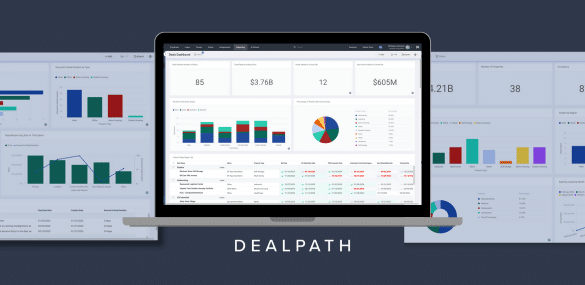As the pandemic, remote work opportunities and market volatility have driven many Americans to relocate, one niche real estate opportunity has exploded: self-storage investments. According to Neighbor.com, 9.4% of US households had a self-storage unit as of 2017. Storage Cafe’s report shows that roughly 38% of Americans either have or plan to utilize a storage unit.
Relatively low overhead costs, high growth potential and flexible leasing options have made self-storage investments an attractive vertical for institutions of all sizes. While there were always self-storage units throughout America, recent market shifts have driven a significant uptick in investment activity. Consequently, spending on self-storage construction has increased by 926% over the past ten years.
Read on to learn more about the risks and opportunities of self-storage investing, as well as how institutions can surface the most profitable opportunities.
What Is Self-Storage Investing?
Self-storage facilities are warehouses that are designed to house hundreds of individual units, each carrying a separate lease. People and businesses rent self-storage units to store their possessions, namely furniture, equipment and vehicles, while moving or tidying their homes.
Texas, which retains 82% of people born in the state even in the midst of massive migration, houses the most self-storage facilities of any state. Across the country, there are more self-storage facilities than Starbucks, McDonalds, Dunkin’, Pizza Hut and Wendy’s franchise locations combined.
As this opportunity has grown, institutions of all sizes have pivoted into self-storage investing. Merit Hill Capital just closed an $18M acquisition of a Florida facility, while Newmark arranged $360M in financing for a self-storage portfolio. Principal Real Estate, a top 10 global real estate manager and Dealpath client, also recently broke into this fast-growing vertical.
Why Institutions Have Turned to Self-Storage Investing
In a market environment where core asset classes like retail and office may present risk, self-storage has emerged alongside industrial and life sciences as a viable opportunity with enormous potential.
Self-Storage Boasts Low Operating Costs Compared to Other Verticals
Investing in self-storage has proven quite advantageous when it comes to bottom line growth due to low operating costs. Following a potentially costly development, investors don’t incur significant month-over-month expenses like they might with other asset classes.
Because storage is the space’s only intended purpose, there is no need for ongoing maintenance. With the exception of climate-controlled units, there are few, if any, utility costs. Unlike multifamily units, self-storage units don’t require a property manager to be on call to respond to frequent maintenance or assistance requests.
Low-Maintenance Tenants and Favorable Lease Terms
Given the self-serve nature of self-storage, accommodating tenants is a largely hands-off process. Property managers typically have no obligations other than providing a unit, moving assistance or another value-add service. This makes servicing tenants a simple, low-cost process.
Short-term leases also offer investors more flexibility when it comes to lease terms and rates. Because month-to-month leases are the norm, self-storage investors can easily respond to market changes by adjusting rates. Tenants are highly incentivized to pay rent on time, as owners can also take faster action in evicting non-paying tenants.
High Tenant Capacity
Beyond favorable leasing terms, investors can also diversify cash flow due to the sheer number of units within a facility. Self-storage facilities tend to have at least 100 units, and this diversification increases the likelihood of positive cash flow.
Unlike a retail investment, in which one tenant failing to resign a lease could make or break the bottom line, self-storage allows investors to be relatively well-protected.
Fast-Growing Market and the Opportunity to Scale
As Americans grow frustrated with higher costs of living and respond to job opportunities in growing markets, the self-storage investment opportunity grows as well. According to Ruby Home, the top metros that saw population growth were Dallas, Phoenix, Houston and Austin. As of October 2022, approximately 33% of Americans intending to relocate planned to utilize a self-storage unit.
This makes self-storage an easily scalable opportunity for firms that choose to hone in on this emerging vertical.
Relatively Resistant to Recession Cycles
In most cases, individuals tend to rent storage units when moving into a new home or apartment. This means that self-storage units can be profitable regardless of market conditions.
Americans tend to buy new homes when the market is booming. Conversely, they tend to rent more during recessions, when buying costs are prohibitively high. During either of these transitory periods, they may use a self-storage unit to store furniture and other items before settling in.
What Are the Risks of Investing in Self-Storage?
Like any other real estate investment, there are inherent risks that come with these advantages.
First, given the factors surrounding the vertical’s boom, many players have already entered the self-storage space. In a saturated market, it can be more difficult to find risk-adjusted opportunities.
While investors value the opportunity to own facilities in various markets across the country, localized demand can vary significantly. For example, the success of one self-storage facility in upstate New York won’t necessarily indicate the profitability of a similar facility in Cleveland.
It’s also important to note that many of the same risks and barriers to entry for other asset classes apply to self-storage. For example, market downturns could raise interest rates and the cost of capital.
Surfacing the Best Self-Storage Opportunities With Deal Management
As your firm reviews new self-storage investment opportunities, details are critical to uncovering the most profitable deals. Tracking metrics like square footage, total units, and total climate controlled units in your pipeline can empower your firm to compare apples to apples and easily understand the complete picture of an investment.
To learn how your firm can expedite evaluations and boost deal velocity with data at its fingertips, download our eBook.
Download Now




